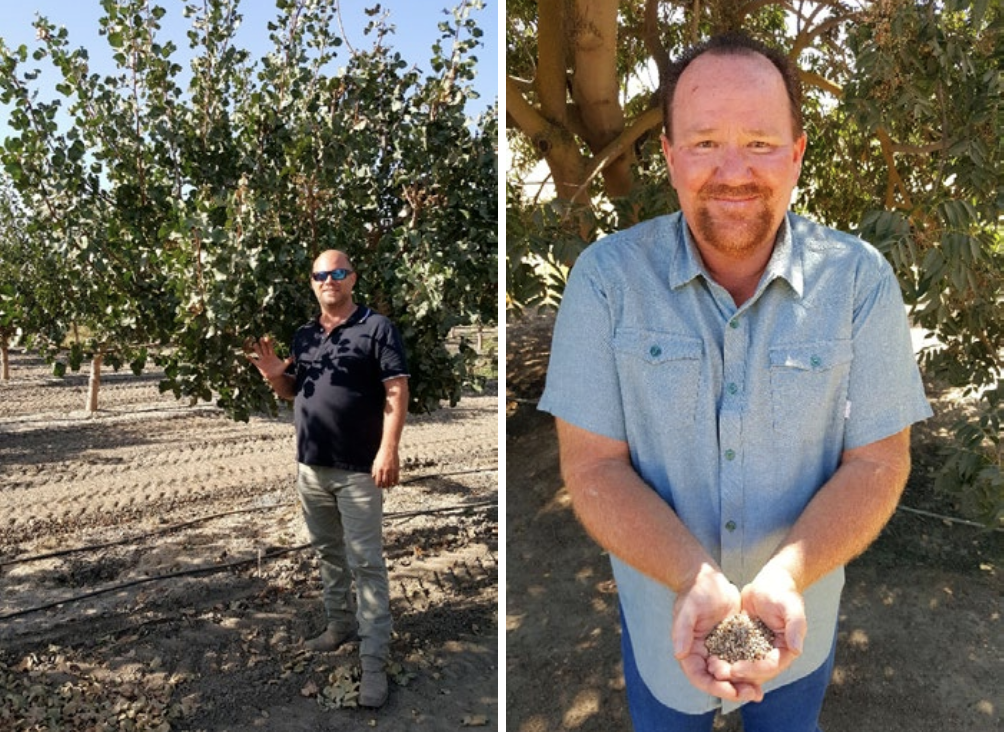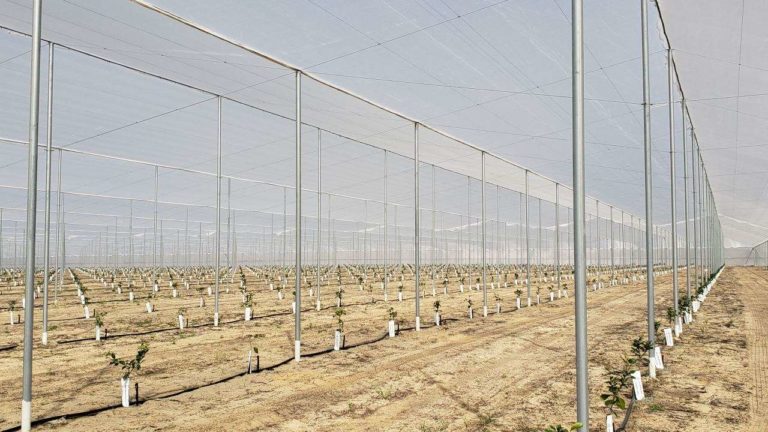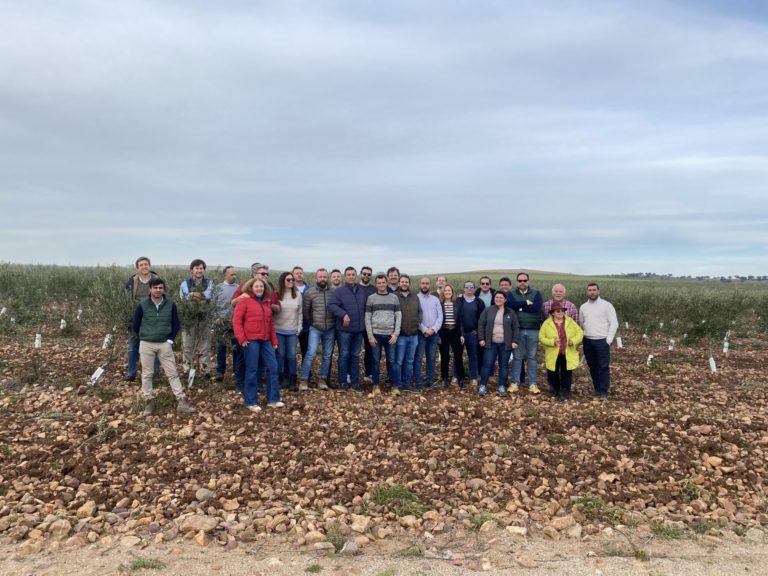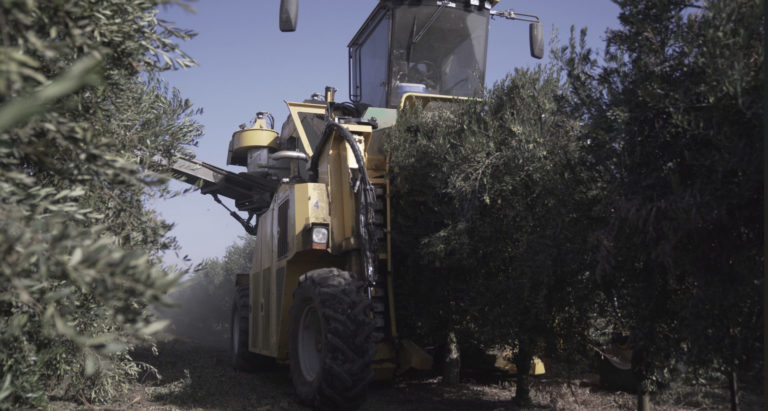The Rise of Platinum: The Choice of Rootstock
The choice of rootstock requires special consideration when establishing a plantation of any crop that requires its use, and pistachio is no exception. Rootstocks influence plant growth, yields, and, most importantly for pistachios, disease resistance. Cold and salinity resistance are also important factors. In response to these issues, a new pistachio rootstock, Platinum, emerged as a creation of Pioneer Nursery.
Jeb Headricks was one of the first growers to try this rootstock. Jeb has always been involved in agriculture, having grown up on the family farm where they primarily cultivated vegetables and walnuts. He enjoyed helping his father in the fields from a young age and dreamed of continuing the management of the family farm. After graduating from the University of Davis, undoubtedly one of the most prestigious universities globally in agronomy, he returned to the farm with his father, who put him in charge of managing a newly planted walnut orchard. After learning as much as possible about walnuts on his farm, he began advising other growers on their operations. It was his relentless pursuit of innovation in the industry that led him to meet the founders of Pioneer Nursery. At that time, in addition to producing pistachio rootstocks, Pioneer also produced clonal walnuts.
Jeb became increasingly interested in pistachios. In his opinion, pistachios are hardier than walnuts, which sometimes stop growing or even die for no apparent reason. Jeb always recalls one time in his neighbor’s orchard where a tractor literally ran over a pistachio tree. The owner replanted the tree, and it ended up fully recovering!
Moreover, his two sons are avid pistachio consumers, while he has to persuade them to eat walnuts. After Jeb planted pistachio trees, he began collaborating with Pioneer. He continued his work managing and advising orchards, focusing mainly on pistachio cultivation. Gradually, the family farm also underwent the same transition from walnut to pistachio production.
Early fruiting and high yields
Jeb is a Platinum advocate due to its high potential for root exploration and vigor, especially in the early years of orchard establishment. As a result, the Platinum rootstock is capable of quickly entering production and achieving high yields. Jeb recalls one of the first orchards he planted with this rootstock. In the 5th leaf, they expected a production of approximately 560 kg/ha. When harvesting was complete, they observed the potential of this rootstock: 1233 kg/ha in the 5th leaf and over 2465 kg/ha in the 6th.
Innovation at Pioneer Nursery
The nursery founders have always been innovative. The discovery of a new rootstock was a boon for the pistachio industry in California in the seventies. At the same time, pistachio orchards were suffering from Verticillium wilt. a fungal disease whose protective structures can remain dormant in the soil for many years. Trees survive for about four years, after which a general decline in the tree is observed. The trees had to be replaced at a high percentage, making it unprofitable for growers.
Pioneer’s founders, Corky Anderson and Ken Puryear, sought pistachio rootstocks resistant to Verticillium wilt. They met with the director of the Plant Introduction Center in Chico, California, and tested numerous pistachio species in pots inoculated with the pathogen. After a few years, they concluded that P. integerrima was tolerant of the disease. It was released to the market in 1980 as Pioneer Gold and revolutionized the sector. Its good adaptation to California’s climatic and soil conditions, combined with its tolerance to Verticillium wilt, led Pioneer to produce a million of these rootstocks in 1999 to meet growers’ demand.
The company continued to grow by offering seeds of PG1 (Pioneer Gold 1) and UCB1. The UCB-1 rootstock was developed by the University of Berkeley from Pioneer Gold pollen, selected for its resistance to Verticillium wilt, and P. Atlantica as the female parent, due to its cold resistance. UBC-1 is a widely used rootstock and produces larger trees than Pioneer Gold. Meanwhile, Pioneer Nursery continued its breeding program and obtained the Pioneer Gold 2 (PGII) rootstock in 1990.
Pistachio propagation by cuttings is complicated, so PG1, PGII, and UCB-1 were available on the market as germinated seeds. The only advantage of seed propagation is obtaining a genetically varied population, which can be an advantage in terms of pathogen resistance. Each tree has a variable proportion of resistant genes, thus increasing the chances of survival during an outbreak or pathogen attack. The major drawback of seed propagation is the high diversity in productions. Some will have high yields, and others not so much. PG1 shows good uniformity in production. In the case of UCB-1, growers have observed that around 20% of the trees have low production.
Platinum Emerges from the Most Productive Tree in a 20-Year Trial
The University of California conducted an extensive trial in 1989 comparing different rootstocks in five different geographic regions across the state of California. Each had 400 trees: 100 of Atlantica (P. atlantica), 100 of Pioneer Gold 1 (P. integerrima), 100 of Pioneer Gold II (P. integerrima x P. atlantica), and 100 trees of UCB-1 (P. atlantica X P. integerrima). The results of these trials show that UCB-1 was significantly more productive in the first 5 years than PG1 or PG2, with Atlantica being the least productive rootstock. The yields were re-evaluated in 2009 and 2011 when the trees were 20 and 22 years old, respectively. In this case, there were no significant differences between the PG2 and UCB-1 rootstocks, with PG1 and Atlantica being the least productive. The yields per tree were also evaluated separately, with the two most productive ones corresponding to PG2. These two trees were clonally reproduced and named Platinum.
Micropropagation of Pistachio Rootstocks
In the early 2000s, some rootstocks were multiplied by micropropagation, also known as clonal propagation. With this method, each plant is genetically identical, resulting in homogeneous plantations. This translates into higher yields. Agromillora carries out the vegetative micropropagation of Platinum using plant material of the highest genetic and sanitary quality. This vigorous rootstock is becoming a high-value option among Californian growers due to its uniformity, rapid entry into production, and high yields. For Jeb Headricks, the choice is clear. In fact, he has just planted another 50 ha on the family farm. This is why he always recommends Platinum to his clients.




